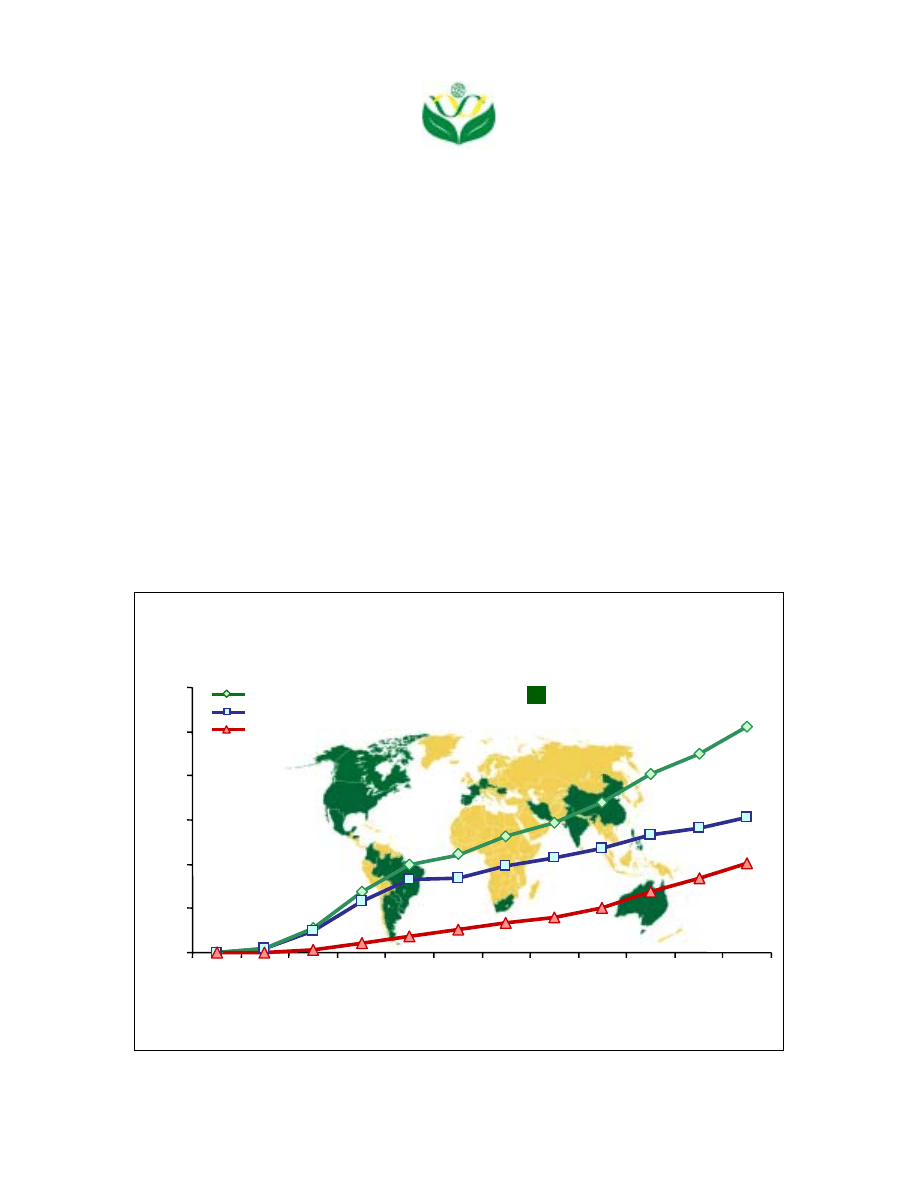
Increase of 13%, 12 million hectares (30 million acres) between 2005 and 2006.
Source: Clive James, 2006.
GLOBAL AREA OF BIOTECH CROPS
Million Hectares (1996 to 2006)
0
20
40
60
80
100
120
1995 1996 1997 1998 1999 2000 2001 2002 2003 2004 2005 2006
Total
Industrial
Developing
22 Biotech Crop Countries
Increase of 13%, 12 million hectares (30 million acres) between 2005 and 2006.
Source: Clive James, 2006.
GLOBAL AREA OF BIOTECH CROPS
Million Hectares (1996 to 2006)
0
20
40
60
80
100
120
1995 1996 1997 1998 1999 2000 2001 2002 2003 2004 2005 2006
Total
Industrial
Developing
22 Biotech Crop Countries
I S A A A
I
NTERNATIONAL
S
ERVICE
FOR
THE
A
CQUISITION
OF
A
GRI
-
BIOTECH
A
PPLICATIONS
EXECUTIVE SUMMAR
EXECUTIVE SUMMAR
EXECUTIVE SUMMAR
EXECUTIVE SUMMAR
EXECUTIVE SUMMARY
Y
Y
Y
Y
No. 35 - 2006
BRIEF 35
Global Status of Commercialized Biotech/GM Crops: 2006
by
Clive James
Chair, ISAAA Board of Directors

Cosponsors:
Published by:
Copyright:
Citation:
ISBN:
Publication Orders and Price:
Info on ISAAA:
Electronically:
Ibercaja, Spain
The Rockefeller Foundation, USA
ISAAA
ISAAA gratefully acknowledges grants from Ibercaja and the Rockefeller Foundation to support the
preparation of this Brief and its free distribution to developing countries. The objective is to provide
information and knowledge to the scientific community and society re biotech/GM crops to facilitate a
more informed and transparent discussion re their potential role in contributing to global food, feed,
fiber and fuel security, and a more sustainable agriculture. The author, not the cosponsors, takes full
responsibility for the views expressed in this publication and for any errors of omission or
misinterpretation.
The International Service for the Acquisition of Agri-biotech Applications (ISAAA).
2006, International Service for the Acquisition of Agri-biotech Applications (ISAAA).
Reproduction of this publication for educational or other non-commercial purposes is authorized
without prior permission from the copyright holder, provided the source is properly acknowledged.
Reproduction for resale or other commercial purposes is prohibited without the prior written
permission from the copyright holder.
James, Clive. 2006. Global Status of Commercialized Biotech/GM Crops: 2006. ISAAA Brief No. 35.
ISAAA: Ithaca, NY.
1-892456-40-0
Please contact the ISAAA SEAsiaCenter for your copy at publications@isaaa.org. Purchase a copy on-
line at http://www.isaaa.org for US$50. For a hard copy of the full version of Brief 35 and Executive
Summary, cost is US$50 including express delivery by courier. The publication is available free of
charge to eligible nationals of developing countries.
ISAAA SEAsiaCenter
c/o IRRI
DAPO Box 7777
Metro Manila, Philippines
For information about ISAAA, please contact the Center nearest you:
ISAAA AmeriCenter
ISAAA AfriCenter
ISAAA SEAsiaCenter
417 Bradfield Hall
c/o CIP
c/o IRRI
Cornell University
PO 25171
DAPO Box 7777
Ithaca NY 14853, U.S.A.
Nairobi
Metro Manila
Kenya
Philippines
or email to info@isaaa.org
For Executive Summaries of all ISAAA Briefs, please visit http://www.isaaa.org
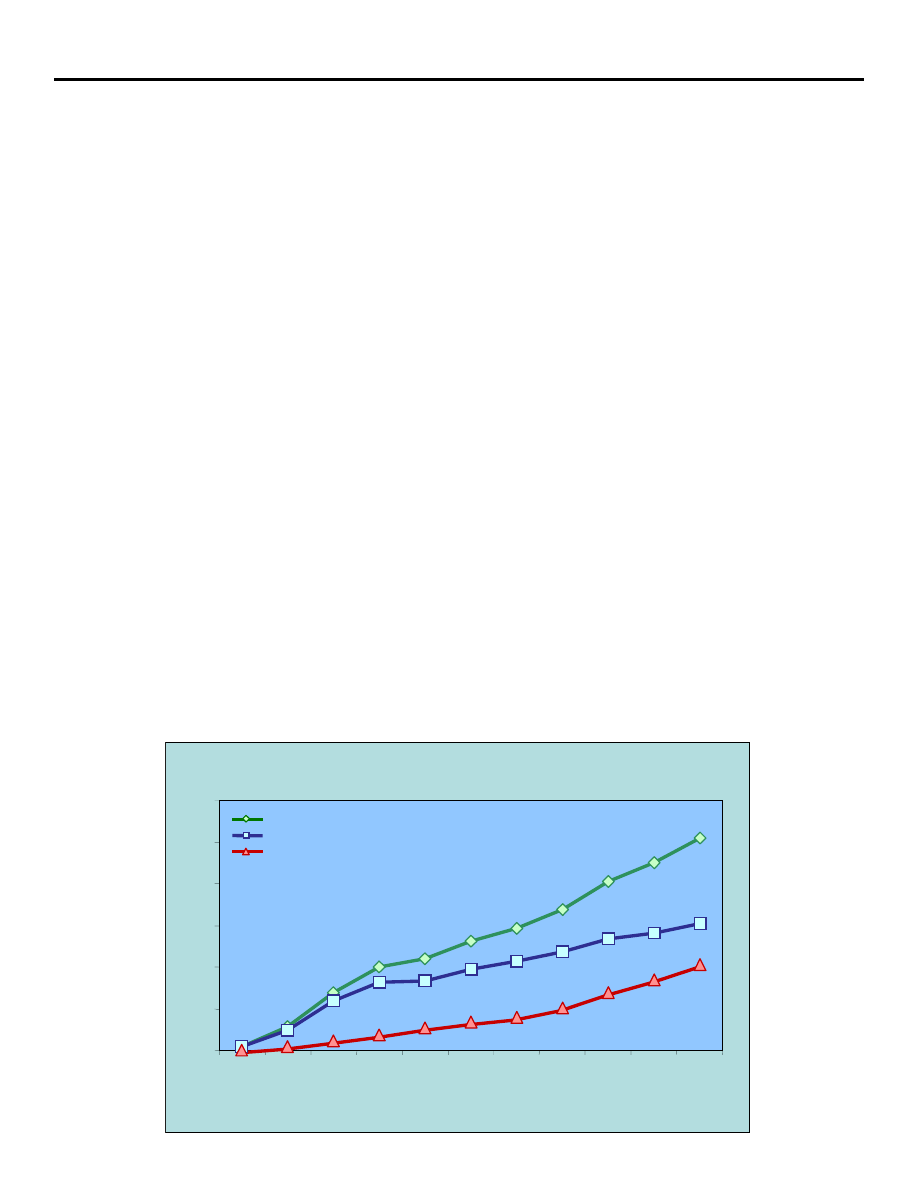
Global Status of Commercialized Biotech/GM Crops: 2006
3
GLOBAL STATUS OF BIOTECH/GM CROPS IN 2006
•
In 2006, the first year of the second decade of commercialization of biotech crops 2006-2015, the global area
of biotech crops continued to climb for the tenth consecutive year at a sustained double-digit growth rate of
13%, or 12 million hectares (30 million acres), reaching 102 million hectares (252 million acres). This is a
historical landmark in that it is the first time for more than 100 million hectares of biotech crops to be grown
in any one year. In order to appropriately account for the use of two or three "stacked traits", that confer
multiple benefits in a single biotech variety, the 102 million hectares expressed as "trait hectares" is 117.7
million, which is 15% higher than the estimate of 102 million hectares.
•
Biotech crops achieved several milestones in 2006: annual hectarage of biotech crops exceeded 100 million
hectares (250 million acres); for the first time, the number of farmers growing biotech crops (10.3 million)
exceeded 10 million; the accumulated hectarage from 1996 to 2006 exceeded half a billion hectares at 577
million hectares (1.4 billion acres), with an unprecedented 60-fold increase between 1996 and 2006, making
it the fastest adopted crop technology in recent history.
•
It is notable that the year-to-year increase of 12 million hectares in 2006 is the second highest in the last 5
years in absolute area, despite the fact that the adoption rates in the US, the principal grower of biotech crops,
are already over 80% for soybean and cotton. It is also noteworthy that in 2006, India, the largest cotton
growing country in the world, registered the highest proportional increase with an impressive gain that almost
tripled its Bt cotton area to 3.8 million hectares.
•
In 2006, the number of countries planting biotech crops increased from 21 to 22 with the EU country Slovakia,
planting Bt maize for the first time and bringing the total number of countries planting biotech crops in the EU
to six out of 25. Spain continued to be the lead country in Europe planting 60,000 hectares in 2006. Importantly,
the collective Bt maize hectarage in the other five countries (France, Czech Republic, Portugal, Germany, and
Slovakia) increased over 5-fold from approximately 1,500 hectares in 2005 to approximately 8,500 hectares,
albeit on small hectarages, and growth in these five countries is expected to continue in 2007.
0
20
40
60
80
100
120
1996 1997 1998 1999 2000 2001 2002 2003 2004 2005 2006
Increase of 13%, 12 million hectares (30 million acres) between 2005 and 2006.
Source: Clive James, 2006.
GLOBAL AREA OF BIOTECH CROPS
Million Hectares (1996 to 2006)
Total
Industrial
Developing
0
20
40
60
80
100
120
1996 1997 1998 1999 2000 2001 2002 2003 2004 2005 2006
Increase of 13%, 12 million hectares (30 million acres) between 2005 and 2006.
Source: Clive James, 2006.
GLOBAL AREA OF BIOTECH CROPS
Million Hectares (1996 to 2006)
Total
Industrial
Developing
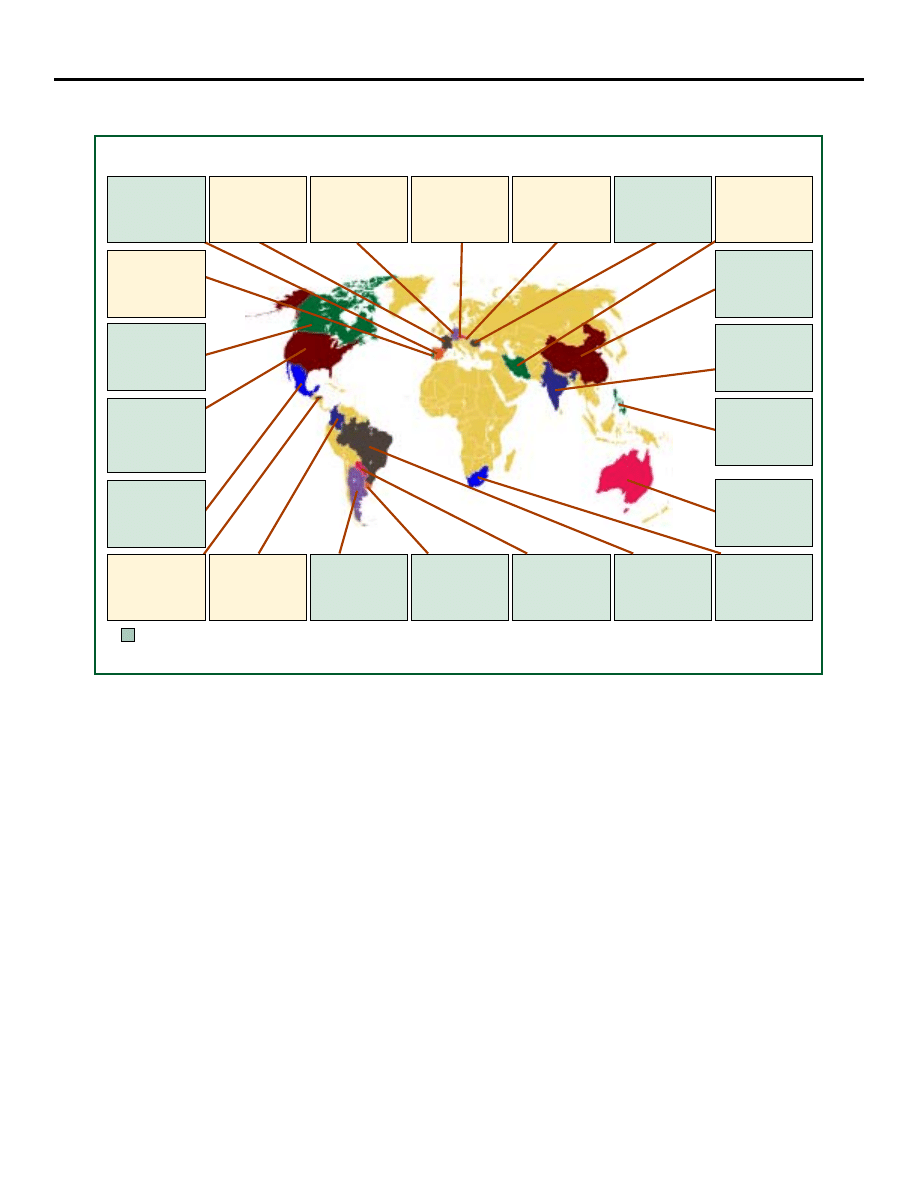
Global Status of Commercialized Biotech/GM Crops: 2006
4
•
10.3 million farmers from 22 countries planted biotech crops in 2006, up from 8.5 million farmers in 2005. Of
the 10.3 million, 90% or 9.3 million (up significantly from 7.7 million in 2005) were small, resource-poor farmers
from developing countries whose increased income from biotech crops contributed to their poverty alleviation.
Of the 9.3 million small farmers, most of whom were Bt cotton farmers, 6.8 million were in China, 2.3 million in
India, 100,000 in the Philippines, several thousand in South Africa, with the balance in the other seven developing
countries which grew biotech crops in 2006. This initial modest contribution of biotech crops to the Millennium
Development Goal of reducing poverty by 50% by 2015 is an important development, which has enormous
potential in the second decade of commercialization from 2006 to 2015.
•
A new biotech crop, herbicide tolerant alfalfa, was commercialized for the first time in the US in 2006. RR
®
alfalfa
has the distinction of being the first perennial biotech crop to be commercialized and was seeded on 80,000
hectares, or 5% of the 1.3 million hectares of alfalfa probably seeded in the US in 2006. RR
®
Flex herbicide tolerant
cotton was launched in 2006 occupying a substantial area of over 800,000 hectares in its first year and was planted
as a single trait and as a stacked product with Bt, with the latter occupying the majority of the hectarage. The
plantings were principally in the US with a smaller hectarage in Australia. Notably in China, a locally developed
virus resistant papaya, a fruit/food crop, was recommended for commercialization in late 2006.
•
In 2006, the 22 countries growing biotech crops comprised 11 developing countries and 11 industrial countries;
they were, in order of hectarage, USA, Argentina, Brazil, Canada, India, China, Paraguay, South Africa, Uruguay,
#21
Germany
<0.05 Million Has.
Maize
#19
Czech Republic
<0.05 Million Has.
Maize
#9
Uruguay*
0.4 Million Has.
Soybean, Maize
#2
Argentina*
18 Million Has.
Soybean, Maize, Cotton
#15
Colombia
<0.05 Million Has.
Cotton
#7
Paraguay*
2 Million Has.
Soybean
#3
Brazil*
11.5 Million Has.
Soybean, Cotton
#14
Spain*
0.1 Million Has.
Maize
#20
Portugal
<0.05 Million Has.
Maize
#4
Canada*
6.1 Million Has.
Canola, Maize, Soybean
#1
USA*
54.6 Million Has.
Soybean, Maize, Cotton,
Canola, Squash, Papaya,
Alfalfa
#16
France
<0.05 Million Has.
Maize
#22
Slovakia
<0.05 Million Has.
Maize
#12
Romania*
0.1 Million Has.
Soybean
#17
Iran
<0.05 Million Has.
Rice
#6
China*
3.5 Million Has.
Cotton
#5
India*
3.8 Million Has.
Cotton
#10
Philippines*
0.2 Million Has.
Maize
#11
Australia*
0.2 Million Has.
Cotton
#8
South Africa*
1.4 Million Has.
Maize, Soybean, Cotton
#18
Honduras
<0.05 Million Has.
Maize
* 14 biotech mega-countries growing 50,000 hectares, or more, of biotech crops.
Source: Clive James, 2006
Biotech Crop Countries and Mega-Countries*, 2006
#13
Mexico*
0.1 Million Has.
Cotton, Soybean

Global Status of Commercialized Biotech/GM Crops: 2006
5
Philippines, Australia, Romania, Mexico, Spain, Colombia, France, Iran, Honduras, Czech Republic, Portugal,
Germany, and Slovakia. Notably, the first eight of these countries grew more than 1 million hectares each - this
provides a broad and stable foundation for future global growth of biotech crops.
•
For the first time, India grew more Bt cotton (3.8 million hectares) than China (3.5 million hectares) and moved
up the world ranking by two places to number 5 in the world, overtaking both China and Paraguay.
•
It is noteworthy that more than half (55% or 3.6 billion people) of the global population of 6.5 billion live in the
22 countries where biotech crops were grown in 2006 and generated significant and multiple benefits. Also,
more than half (52% or 776 million hectares) of the 1.5 billion hectares of cropland in the world is in the 22
countries where approved biotech crops were grown in 2006.
•
In 2006, the US, followed by Argentina, Brazil, Canada, India, and China continued to be the principal adopters
of biotech crops globally, with 54.6 million hectares planted in the US (53% of global biotech area) of which
approximately 28% were stacked products containing two or three traits. The stacked products, currently deployed
in the US, Canada, Australia, Mexico, South Africa and the Philippines, are an important and growing future
trend, which meets the multiple yield constraints of farmers.
•
The largest absolute increase in biotech crop area in any country in 2006 was in the US estimated at 4.8 million
hectares, followed by India at 2.5 million hectares, Brazil with 2.1 million hectares, with Argentina and South
Africa tying at 0.9 million hectares each. The largest proportional or percentage increase was in India at 192%
(almost a three-fold increase from 1.3 million hectares in 2005 to 3.8 million hectares in 2006) followed closely
by South Africa at 180% with an impressive increase in its biotech white and yellow maize area, and the
Philippines at 100% increase, also due to a significant increase in its biotech maize area.
•
Biotech soybean continued to be the principal biotech crop in 2006, occupying 58.6 million hectares (57% of
global biotech area), followed by maize (25.2 million hectares at 25%), cotton (13.4 million hectares at 13%)
and canola (4.8 million hectares at 5% of global biotech crop area).
•
From the genesis of commercialization in 1996, to 2006, herbicide tolerance has consistently been the dominant
trait followed by insect resistance and stacked genes for the two traits. In 2006, herbicide tolerance, deployed in
soybean, maize, canola, cotton and alfalfa occupied 68% or 69.9 million hectares of the global biotech 102
million hectares, with 19.0 million hectares (19%) planted to Bt crops and 13.1 million hectares (13%) to the
stacked traits of Bt and herbicide tolerance. The stacked product was the fastest growing trait group between
2005 and 2006 at 30% growth, compared with 17% for insect resistance and 10% for herbicide tolerance.
•
During the period 1996 to 2006, the proportion of the global area of biotech crops grown by developing countries
has increased consistently every year. Forty percent of the global biotech crop area in 2006, equivalent to 40.9
million hectares, was grown in developing countries where growth between 2005 and 2006 was substantially
higher (7.0 million hectares or 21% growth) than industrial countries (5.0 million hectares or 9% growth). The
increasing collective impact of the five principal developing countries (India, China, Argentina, Brazil and South
Africa) representing all three continents of the South, Asia, Latin America, and Africa, is an important continuing
trend with implications for the future adoption and acceptance of biotech crops worldwide.
•
In the first 11 years, the accumulated global biotech crop area was 577 million hectares or 1.4 billion acres,
equivalent to over half of the total land area of the USA or China, or 25 times the total land area of the UK. High

Global Status of Commercialized Biotech/GM Crops: 2006
6
adoption rates reflect farmer satisfaction with the products that offer substantial benefits ranging from more convenient
and flexible crop management, lower cost of production, higher productivity and/or net returns per hectare, health
and social benefits, and a cleaner environment through decreased use of conventional pesticides, which collectively
contribute to a more sustainable agriculture. The continuing rapid adoption of biotech crops reflects the substantial
and consistent improvements for both large and small farmers, consumers and society in both industrial and developing
countries.
•
The most recent survey
1
of the global impact of biotech crops for the decade 1996 to 2005, estimates that the
global net economic benefits to biotech crop farmers in 2005 was $5.6 billion, and $27 billion ($13 billion for
developing countries and $14 billion for industrial countries) for the accumulated benefits during the period
1996 to 2005; these estimates include the benefits associated with the double cropping of biotech soybean in
Argentina. The accumulative reduction in pesticides for the decade 1996 to 2005 was estimated at 224,300 MT
of active ingredient, which is equivalent to a 15% reduction in the associated environmental impact of pesticide
use on these crops, as measured by the Environmental Impact Quotient (EIQ) - a composite measure based on
the various factors contributing to the net environmental impact of an individual active ingredient.
Table 1. Global Area of Biotech Crops in 2006: by Country (Million Hectares)
Rank
1*
2*
3*
4*
5*
6*
7*
8*
9*
10*
11*
12*
13*
14*
15
*
16
*
17
*
18
*
19
*
20
*
21
*
22
*
Source: Clive James, 2006.
* 14 biotech mega-countries growing 50,000 hectares, or more, of biotech crops
Country
USA
Argentina
Brazil
Canada
India
China
Paraguay
South Africa
Uruguay
Philippines
Australia
Romania
Mexico
Spain
Colombia
France
Iran
Honduras
Czech Republic
Portugal
Germany
Slovakia
Area (million hectares)
54.6
18.0
11.5
6.1
3.8
3.5
2.0
1.4
0.4
0.2
0.2
0.1
0.1
0.1
<0.1
<0.1
<0.1
<0.1
<0.1
<0.1
<0.1
<0.1
Biotech Crops
Soybean, maize, cotton, canola, squash, papaya, alfalfa
Soybean, maize, cotton
Soybean, cotton
Canola, maize, soybean
Cotton
Cotton
Soybean
Maize, soybean, cotton
Soybean, maize
Maize
Cotton
Soybean
Cotton, soybean
Maize
Cotton
Maize
Rice
Maize
Maize
Maize
Maize
Maize
1
GM Crops: The First Ten Years - Global Socio-economic and Environmental Impacts by Graham Brookes and Peter Barfoot, P.G. Economics. 2006

Global Status of Commercialized Biotech/GM Crops: 2006
7
•
The serious and urgent concerns about the environment highlighted in the 2006 Stern Report on Climate Change
2
,
have implications for biotech crops which can potentially contribute to reduction of greenhouse gases and
climate change in three principal ways. First, permanent savings in carbon dioxide emissions through reduced
use of fossil-based fuels, associated with fewer insecticide and herbicide sprays; in 2005 this was an estimated
saving of 962 million kg of carbon dioxide (CO
2
), equivalent to reducing the number of cars on the roads by 0.43
million. Secondly, conservation tillage (need for less or no ploughing with herbicide tolerant biotech crops) for
biotech food, feed and fiber crops, led to an additional soil carbon sequestration equivalent in 2005 to 8,053
million kg of CO
2
, or removing 3.6 million cars off the road. Thus, in 2005 the combined permanent and
additional savings through sequestration was equivalent to a saving of 9,000 million kg of CO
2
or removing 4
million cars from the road. Thirdly, in the future, cultivation of a significant additional area of biotech-based
energy crops to produce ethanol and biodiesel will, on the one-hand, substitute for fossil fuels and on the other,
will recycle and sequester carbon. Recent research indicates that biofuels could result in net savings of 65% in
energy resource depletion. Given that energy crops will likely occupy a significant additional crop hectarage in
the future, the contribution of biotech-based energy crops to climate change could be significant.
•
While 22 countries planted commercialized biotech crops in 2006, an additional 29 countries, totaling 51, have
granted regulatory approvals for biotech crops for import for food and feed use and for release into the environment
since 1996. A total of 539 approvals has been granted for 107 events for 21 crops. Thus, biotech crops are
accepted for import for food and feed use and for release into the environment in 29 countries, including major
food importing countries like Japan, which do not plant biotech crops. Of the 51 countries that have granted
approvals for biotech crops, the US tops the list followed by Japan, Canada, South Korea, Australia, the Philippines,
Mexico, New Zealand, the European Union and China. Maize has the most events approved (35) followed by
cotton (19), canola (14), and soybean (7). The event that has received regulatory approval in most countries is
herbicide tolerant soybean event GTS-40-3-2 with 21 approvals (EU=25 counted as 1 approval only), followed
by insect resistant maize (MON 810) and herbicide tolerant maize (NK603) both with 18 approvals, and insect
resistant cotton (MON 531/757/1076) with 16 approvals worldwide.
•
The overview of biofuels in this Brief serves to introduce the subject, and is focused on the implications of the
growing interest and investments in biofuels in relation to two specific topics: crop biotechnology and developing
countries. It is evident that biotechnology offers very significant advantages for increasing efficiency of biofuel
production in both industrial and developing countries. It is expected that biotechnology and other improvements
will allow industrial countries, like the US, to continue to produce surplus supplies of food, feed and fiber and
coincidentally achieve ambitious goals for biofuels in the near-term. Any investment in food crops for biofuels
in food insecure developing countries must not compete, but complement the programs in place for food, feed
and fiber security. Any program developed in biofuels must be sustainable in terms of agricultural practice and
forest management, the environment, and the ecosystem, particularly the responsible and efficient use of water.
Most developing countries, with the exception of countries like Brazil which is a world leader in biofuels, would
benefit significantly from forging strategic partnerships with public and private sector organizations from both
industrial countries and the advanced developing countries, which are knowledgeable and experienced in the
production, distribution and consumption of biofuels. Biofuels should not only benefit the national economy of
a developing country but also benefit the poorest people in the country, who are mainly in the rural areas, most
of whom are small resource-poor subsistence farmers and the landless rural labor who are entirely dependent on
agriculture and forestry for their livelihoods.
2
Stern Review on the Economics of Climate Change, UK 2006 (www.sternreview.org.uk).

Global Status of Commercialized Biotech/GM Crops: 2006
8
•
The future for biotech crops looks encouraging with the number of countries adopting the four current major
biotech crops expected to grow, and their global hectarage and number of farmers planting biotech crops expected
to increase as the first generation of biotech crops is more widely adopted and the second generation of new
applications for both input and output traits becomes available. The outlook for the next decade of
commercialization, 2006 to 2015, points to continued growth in the global hectarage of biotech crops, up to 200
million hectares, with at least 20 million farmers growing biotech crops in up to 40 countries, or more, by 2015.
Genes conferring a degree of drought tolerance, expected to become available around 2010-2011, are projected
to have substantial impact relative to current input traits and will be particularly important for developing countries
which suffer more from drought, the most prevalent and important constraint to increased crop productivity
worldwide. The second decade of commercialization, 2006-2015, is likely to feature significantly more growth
in Asia compared with the first decade, which was the decade of the Americas, where there will be continued
growth in stacked traits in North America and strong growth in Brazil. The mix of crop traits will become richer
with quality traits making their long awaited debut with implications for acceptance, particularly in Europe. A
2006 study by the International Food Information Council (IFIC)
3
in the US confirmed that the vast majority are
confident in the safety of the US food supply and express little to no concern about food and agricultural
biotechnology, and would selectively buy biotech- based products with high omega-3 oil content. Other products
including pharmaceutical products, oral vaccines, and specialty products will also feature. By far, the most
important potential contribution of biotech crops will be their contribution to the humanitarian Millennium
Development Goals (MDG) of reducing poverty and hunger by 50% by 2015. The use of biotechnology to
increase efficiency of first generation food/feed crops and second-generation energy crops for biofuels will have
high impact and present both opportunities and challenges. Injudicious use of the food/feed crops, sugarcane,
cassava and maize for biofuels in food insecure developing countries could jeopardize food security goals if the
efficiency of these crops cannot be increased through biotechnology and other means, so that food, feed and
fuel goals can all be met. Adherence to good farming practices with biotech crops, such as rotations and resistance
management, will remain critical as it has been during the first decade. Continued responsible stewardship must
be practiced, particularly by the countries of the South, which will be the major new deployers of biotech crops
in the second decade of commercialization of biotech crops, 2006 to 2015.
3
International Food Information Council. 2006. Food Biotechnology: A Study of U.S. Consumer Attitudinal Trends, 2006 Report.
THE GLOBAL VALUE OF THE BIOTECH CROP MARKET
In 2006, the global market value of biotech crops, estimated by Cropnosis, was $6.15 billion representing
16% of the $38.5 billion global crop protection market in 2006 and 21% of the ~$30 billion 2006 global
commercial seed market. The $6.15 billion biotech crop market comprised of $2.68 billion for biotech
soybean (equivalent to 44% of global biotech crop market), $2.39 billion for biotech maize (39%), $0.87
billion for biotech cotton (14%), and $0.21 billion for biotech canola (3%). The market value of the global
biotech crop market is based on the sale price of biotech seed plus any technology fees that apply. The
accumulated global value for the eleven-year period, since biotech crops were first commercialized in
1996, is estimated at $35.5 billion. The global value of the biotech crop market is projected at over $6.8
billion for 2007.
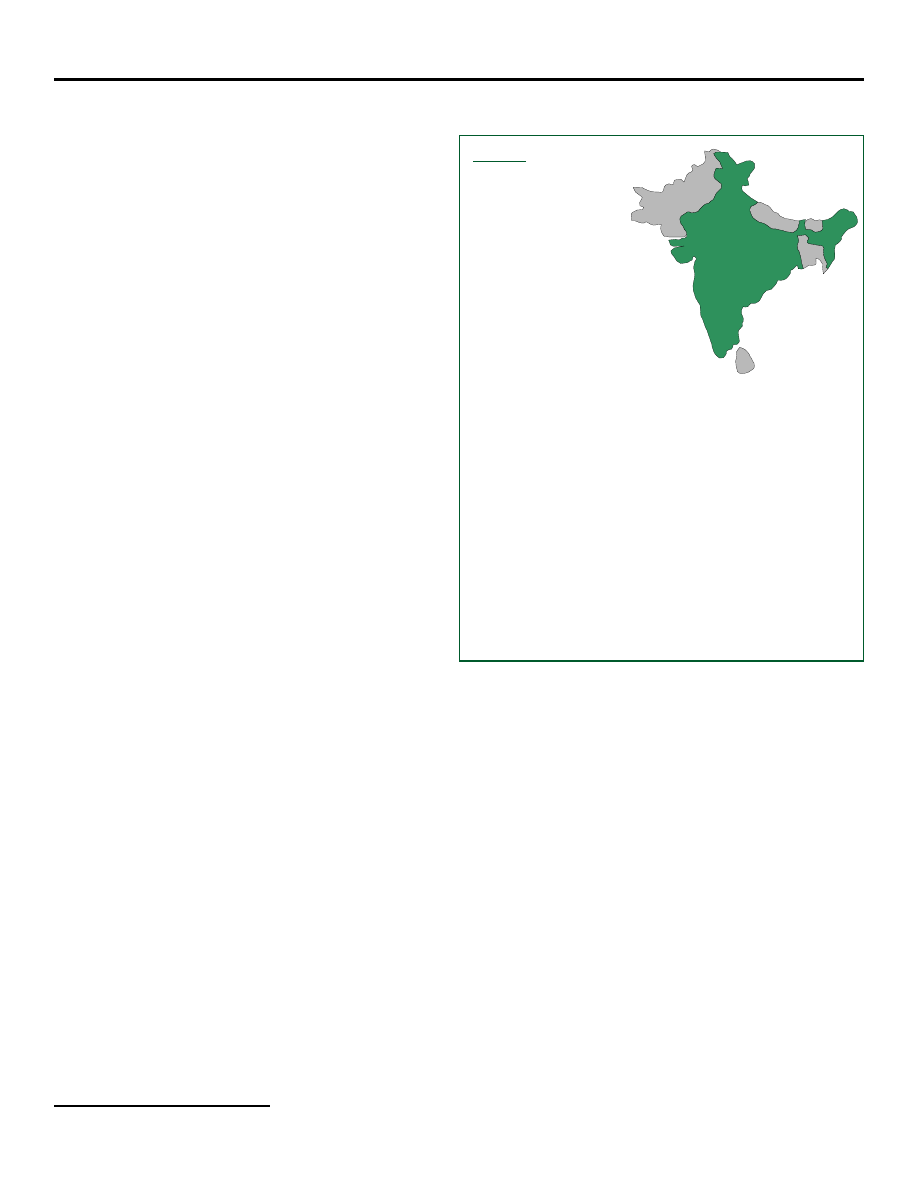
Global Status of Commercialized Biotech/GM Crops: 2006
9
FOCUS: INDIA
Largest proportional increase in 2006 - almost
a 3-fold increase to 3.8 million hectares
India, the largest democracy in the world, is highly
dependent on agriculture which generates almost one
quarter of its GDP and provides two thirds of its people
with their means of survival. India is a nation of small
resource-poor farmers, most of whom do not make
enough income to cover their meager basic needs and
expenditures. The National Sample Survey
4
last
conducted in 2003, reported that 60.4% of rural
households were engaged in farming indicating that
there are 89.4 million farmer households in India. Sixty
percent of the farming households own less than 1
hectare of land, and only 5% own more than 4 hectares.
Only the 5 million farming households (5% of 90 million)
have an income that is greater than their expenditures.
The average income of farm households in India (based
on 45 Rupees per US Dollar) was $46 per month and
the average consumption expenditures was $62. Thus,
of the 90 million farmer households in India,
approximately 85 million, which represent about 95%
of all farmers, are small resource-poor farmers who do
not make enough money from the land to make ends
meet - in the past, these included the vast majority of the 5 million or more Indian cotton farmers. India has a larger
area of cotton than any country in the world - 9 million hectares cultivated by approximately 5 to 5.5 million
farmers. Whereas India's cotton area represents 25% of the global area of cotton, in the past it produced only 12%
of world production because Indian cotton yields were some of the lowest in the world.
Bt cotton, which confers resistance to important insect pests of cotton, was first adopted in India as hybrids in 2002.
India grew approximately 50,000 hectares of officially approved Bt cotton hybrids for the first time in 2002, and
doubled its Bt cotton area to approximately 100,000 hectares in 2003. The Bt cotton area increased again four-fold
in 2004 to reach over half a million hectares. In 2005, the area planted to Bt cotton in India continued to climb
reaching 1.3 million hectares, an increase of 160% over 2004.
In 2006, the record increases in adoption in India continued with almost a tripling of area of Bt cotton from 1.3
million hectares to 3.8 million hectares. In 2006, this tripling in area was the highest year-on-year growth for any
country in the world. Of the 6.3 million hectares of hybrid cotton in India in 2006, which represents 70% of all the
cotton area in India, 60% or 3.8 million hectares was Bt cotton - a remarkably high proportion in a fairly short period
of five years. The distribution of Bt cotton in the major growing states in 2004, 2005 and 2006 is shown in Table 2.
The major states growing Bt cotton in 2006, listed in order of hectarage, are Maharashtra (1.840 million hectares
representing almost half, 48% of all Bt cotton in India in 2006) followed by Andhra Pradesh (830,000 hectares or
22%), Gujarat (470,000 hectares or 12%), Madhya Pradesh (310,000 hectares or 8%), and 215,000 hectares (6%)
in the Northern Zone and the balance in Karnataka and Tamil Nadu and other states.
4
National Sample Survey, Organization's Situation Assessment Survey of farmers (NSS, 59th Round), India, 2003
INDIA
Population: 1.09 billion
GDP: $719.8 billion
% employed in agriculture: 60%
Agriculture as % GDP: 22%
Agricultural GDP: $158 billion
Arable Land (AL): 177.5 million hectares
Ratio of AL/Population*: 0.7
Major crops:
• Sugarcane
• Rice, paddy • Wheat
• Vegetables (fresh) • Potato
• Cotton
Commercialized Biotech Crop: Bt Cotton
Total area under biotech crops and (% increase in 2006):
3.8 Million Hectares (+192% in 2006)
Farm income gain from biotech, 2002-2005: $463 million
*Ratio: % global AL / % global population
• Hyderabad
• New
Delhi
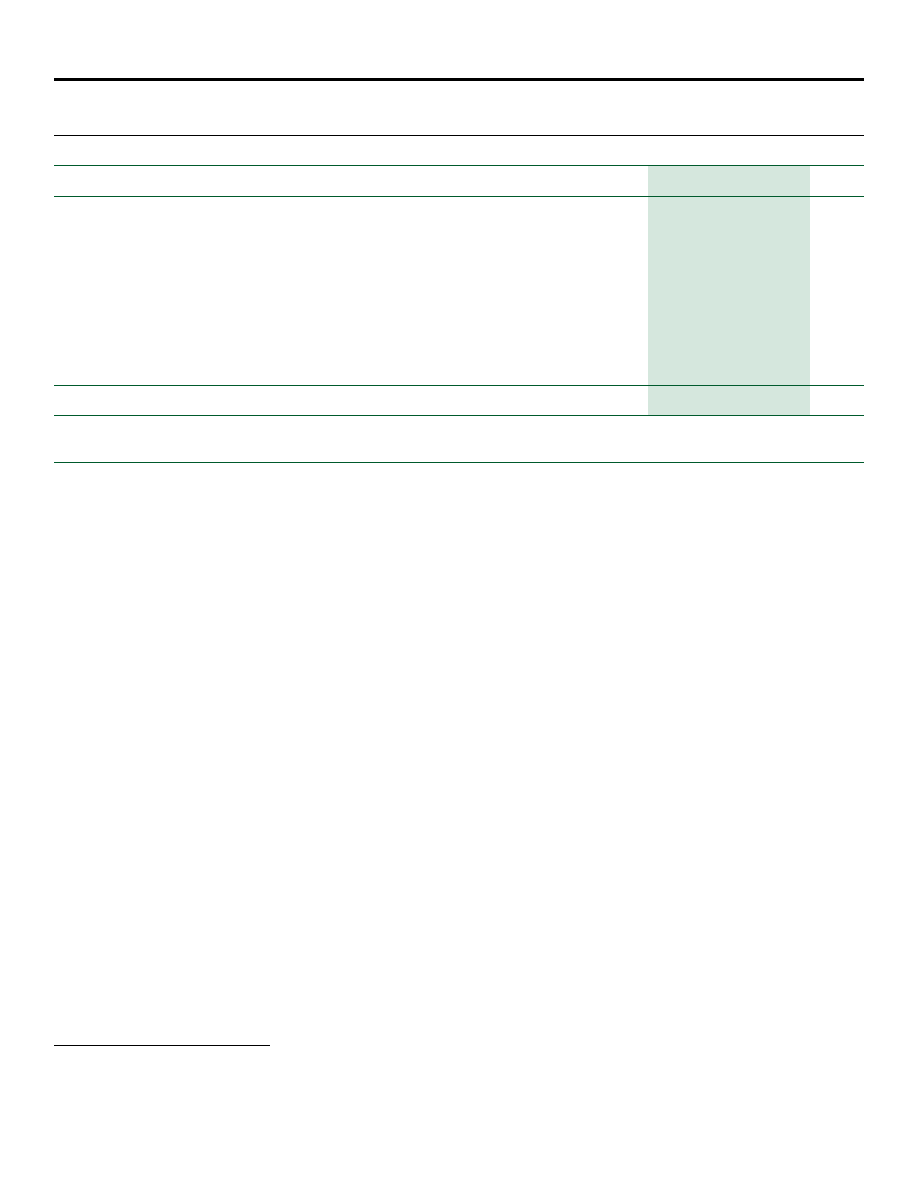
Global Status of Commercialized Biotech/GM Crops: 2006
10
The number of events, as well as the number of Bt cotton hybrids and companies marketing approved hybrids
increased from one event and 20 hybrids in 2005 by more than three-fold in 2006 to four events and 62 hybrids
(see map on page 11).
It is estimated that in India, approximately 2.3 million small farmers planted on average 1.65 hectares of Bt cotton
in 2006. The number of farmers growing Bt cotton hybrids in India has increased from 300,000 small farmers in
2004 to 1 million in 2005, with over a two-fold increase in 2006 to 2.3 million farmers, who are reaping significant
benefits from the technology. Coincidental with the steep increased adoption of Bt cotton between 2002 and 2005,
the average yield of cotton in India, which had one of the lowest yields in the world, increased from 308 kg per
hectare in 2001-02 to 450 kg per hectare in 2005-2006, with most of the increase in yield of up to 50% or more
attributed to Bt cotton.
The work of Bennett et al.
5
confirmed that the principal gain from Bt cotton in India is the significant yield gains
estimated at 45% in 2002, and 63% in 2001, for an average of 54% over the two years. Taking into account the
decrease in application of insecticides for bollworm control, which translates into a saving, on average, of 2.5
sprays, and the higher cost of Bt cotton seed, Brookes and Barfoot estimate that the net economic benefits for Bt
cotton farmers in India were $139 per hectare in 2002, $324 per hectare in 2003, $171 per hectare in 2004, and
$260 per hectare in 2005, for a four year average of approximately $225 per hectare. The benefits at the farmer level
translated to a national gain of $339 million in 2005 and accumulatively $463 million for the period 2002 to 2005.
Other studies report results in the same range, acknowledging that benefits will vary from year to year due to varying
levels of bollworm infestations. The most recent study
6
by Gandhi and Namboodiri report a yield gain of 31%, a
significant reduction in the number of pesticide sprays by 39%, and an 88% increase in profit or an increase of
$250 per hectare for the 2004 cotton growing season.
For more details on India, please see full version of Brief 35 in which more comprehensive profiles of key
biotech crop growing countries are also featured.
5
Bennett R, Ismael Y, Kambhampati U, and Morse S (2004) Economic Impact of Genetically Modified Cotton in India, Agbioforum Vol 7, No
3, Article 1
6
Gandhi V and Namboodiri N.V., "The Adoption and Economics of Bt Cotton in India: Preliminary Results from a Study", IIMA Working Paper
No. 2006-09-04, pp 1-27, Sept 2006
Table 2.
Adoption of Bt Cotton in India, by Major State, in 2004, 2005, and 2006 (‘000 hectares)
2004
Maharashtra
Andhra Pradesh
Gujarat
Madhya Pradesh
Northern Zone*
Karnataka
Tamil Nadu
Other
200
75
122
80
- -
18
5
- -
* Punjab, Haryana, Rajasthan
Source: ISAAA, 2006.
Total
500
2005
607
280
150
146
60
30
27
- -
1,300
2006
1,840
830
470
310
215
85
45
5
3,800
State
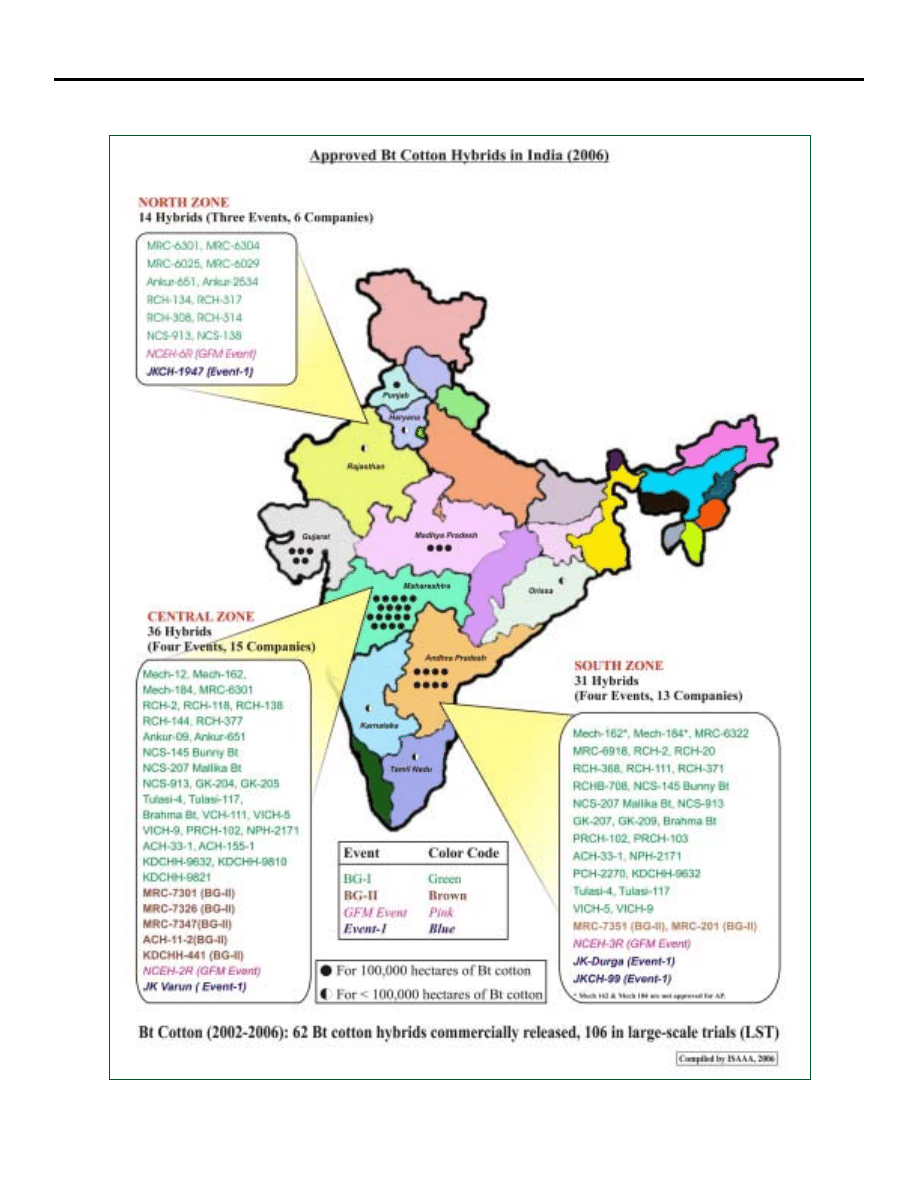
Global Status of Commercialized Biotech/GM Crops: 2006
11

I S A A A
I
NTERNATIONAL
S
ERVICE
FOR
THE
A
CQUISITION
OF
A
GRI
-
BIOTECH
A
PPLICATIONS
ISAAA SEAsiaCenter
c/o IRRI, DAPO Box 7777
Metro Manila, Philippines
Tel.: +63 2 5805600 • Fax: +63 2 5805699 or +63 49 5367216
URL: http://www.isaaa.org
For details on obtaining a copy of ISAAA Brief No. 35 - 2006, email publications@isaaa.org
Wyszukiwarka
Podobne podstrony:
Global Status of Commercialized Biotech GM Crops 2005
The Global Diffusion of Plant Biotechnology International Adoption and Research in 2004
The first decade of Gm crops
USŁUGI, World exports of commercial services by region and selected economy, 1994-04
Clint Leung An Overview of Canadian Artic Inuit Art (2006)
Masonic Status Of Aleister Crowley And Oto(Ordo Templi Orien
A Comparison of the Status of Women in Classical Athens and E
internet auctions future of e commerce UUGX5OJNS3RZ2U6BRCG7DNS5O5WPV5OEOGQ4KKA
PBO-G-01-F01 Status of the system, Akademia Morska, Chipolbrok
Bertalanffy The History and Status of General Systems Theory
38 525 530 Wear Studies of Commercial and Ti Nb HSS
ONeil Status of Hollands Personality Types
Global Burden of Disease Visualisations Cause of Death female Poland
Crossley Bennet Jex Burnfield Development of a global maeasure of job embeddedness
Corrosion behaviour of commercially pure titanium shot blast
więcej podobnych podstron